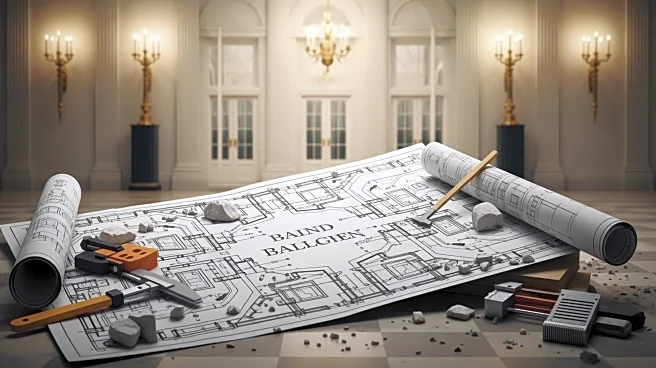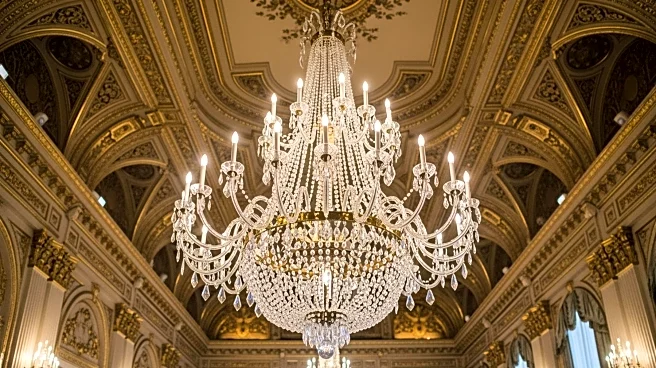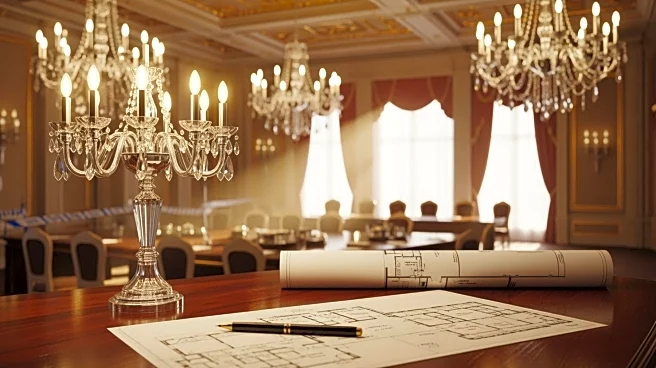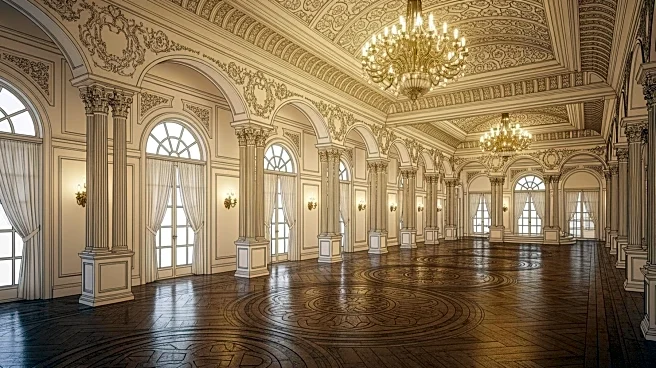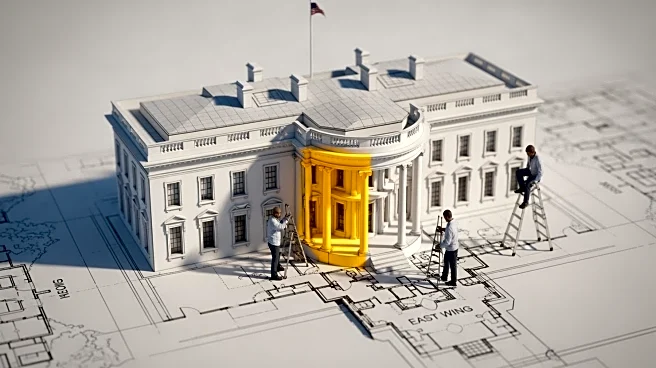What's Happening?
The construction of President Trump's new ballroom at the White House is receiving a financial boost from a legal settlement with YouTube. Alphabet, Google's parent company, is contributing $22 million
as part of a settlement related to Trump's ban from the platform following the January 6 Capitol riot. This contribution represents nearly 10% of the estimated $250 million cost for the ballroom, which is being funded by private donors. The project has sparked public debate over its funding sources and the impact on the White House's historical structure.
Why It's Important?
The involvement of Alphabet in funding the White House ballroom through a legal settlement highlights the complex relationship between tech companies and political figures. This development raises questions about the influence of corporate settlements on public projects and the ethical implications of such arrangements. The funding underscores the growing role of private entities in shaping government initiatives, potentially affecting public trust and transparency. The project also reflects broader trends in the privatization of public spaces and the challenges of maintaining historical integrity in government buildings.
What's Next?
As the ballroom construction continues, there will likely be increased scrutiny over the transparency of funding sources and the project's impact on the White House's historical integrity. Advocacy groups and political leaders may call for more oversight and accountability in the renovation process. The completion of the ballroom could influence future decisions on public-private partnerships in government projects, setting a precedent for how such collaborations are managed and perceived.
Beyond the Headlines
The ballroom project highlights broader themes of power dynamics and influence in American politics, as private funding plays a significant role in public projects. It raises ethical questions about the intersection of private interests and public spaces, and how these relationships might affect governance and public trust. The construction could also symbolize shifts in cultural values, reflecting changing priorities in how national symbols are maintained and presented.


